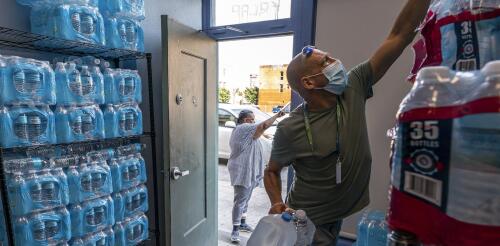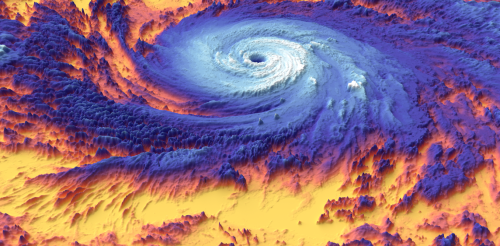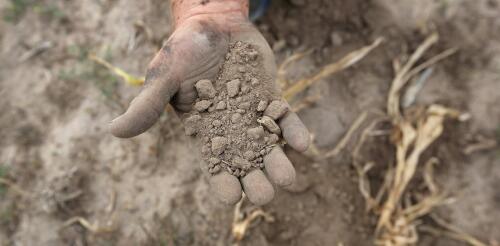Global warming
The heat dome that descended upon the Pacific Northwest in late June 2021 met a population radically unprepared for it. Almost two-thirds of households earning US$50,000 or less and 70% of rented houses in Washington’s King, Pierce and Snohomish counties had no air conditioning. In Spokane, nearly one-quarter of survey respondents didn’t have in-home air conditioning, and among those who did, 1 in 5 faced significant, often financial, barriers to using it. Imagine having no way to cool your home as temperatures spiked to 108 degrees Fahrenheit (43 Celsius), and 120 F (49 C) in some places. People in urban heat islands – areas with few trees and lots of asphalt and concrete that can absorb and radiate heat – saw temperatures as much as 14 F (7.8 C) higher than that. Extreme heat disasters like this are becoming increasingly common in regions where high heat used to be rare. Blackouts during severe heat waves can also leave residents who believe they are...
When a hurricane hits land, the destruction can be visible for years or even decades. Less obvious, but also powerful, is the effect hurricanes have on the oceans. In a recent study, we show through real-time measurements that hurricanes don’t just churn water at the surface. They can also push heat deep into the ocean in ways that can lock it up for years and ultimately affect regions far from the storm. Heat is the key component of this story. It has long been known that hurricanes gain their energy from warm sea surface temperatures. This heat helps moist air near the ocean surface rise like a hot air balloon and form clouds taller than Mount Everest. This is why hurricanes generally form in tropical regions. What we discovered is that hurricanes ultimately help warm the ocean, too, by enhancing its ability to absorb and store heat. And that can have far-reaching consequences. How hurricanes draw energy from the ocean’s...
Flash droughts develop fast, and when they hit at the wrong time, they can devastate a region’s agriculture. They’re also becoming increasingly common as the planet warms. In a new study published May 25, 2023, we found that the risk of flash droughts, which can develop in the span of a few weeks, is on pace to rise in every major agriculture region around the world in the coming decades. In North America and Europe, cropland that had a 32% annual chance of a flash drought a few years ago could have as much as a 53% annual chance of a flash drought by the final decades of this century. The result would put food production, energy and water supplies under increasing pressure. The cost of damage will also rise. A flash drought in the Dakotas and Montana in 2017 caused US$2.6 billion in agricultural damage in the U.S. alone. Stunted corn in Nebraska struggles to grow during the 2012 flash drought that covered much of the cent...
The Biden administration proposed new power plant rules on May 11, 2023, that have the potential to be among the most stringent federal policy measures on coal, oil and gas power plants the United States has ever introduced. The proposal would set new carbon pollution standards for existing power plants, effectively restricting their emissions of carbon dioxide, a greenhouse gas that contributes to climate change. Operators of fossil fuel power plants would need to find feasible and innovative ways to avoid excessive carbon dioxide releases. That’s drawing attention to a relatively mature, but expensive technology: carbon capture and storage, or CCS. Most CCS chemically separates carbon dioxide generated during fossil fuel combustion, compresses it and transports it through pipelines for storage, typically in geological formations deep underground. While CCS can be effective, it has some high hurdles on its path to widespread use. I follow U.S. policies on CCS as a clim...
Heavy downpours and a thick snowpack in the Western mountains and Upper Midwest have put communities in several states at risk of flooding this spring – or already under water. Flooding is the costliest type of natural disaster in the U.S., responsible for about 90% of the damage from natural disasters each year. It happens almost every day somewhere in the country. Yet, much of the aging infrastructure meant to protect U.S. communities is in bad shape and, in some cases, failing. The American Society of Civil Engineers gave the nation’s dams, levees and stormwater infrastructure a D grade in its latest report card, in 2021. Help is coming. Congress authorized billions of dollars for infrastructure projects under the Infrastructure Investment and Jobs Act in 2021. But there’s a problem: New infrastructure planning frequently relies on historical flood patterns for its benchmarks rather than forecasts of changing risks as the climate warms. We study flood ris...




